Recent News
BZS Dedicate Section Of Land To Argus GroupThursday, November 15, 2012
Bermuda Zoological Society [BZS] today announces that it has dedicated a waterfront section of land at the Bermuda Aquarium, Museum and Zoo [BAMZ] to the Argus Group in recognition of the insurance company’s ongoing support.
Bermuda turtle ‘Tucker’ reaches the Bahamas
Wednesday, November 14, 2012
The turtle was one of five caught in the ocean around Bermuda and fitted with GPS tracking tags before becoming involved in the Tour de Turtles research project which started in August. The Tour de Turtles ‘race’ ended on Monday.
A luxurious spa treatment for some special residents - free of charge!
Tuesday, November 06, 2012
Kermit the Frog famously said: ‘It ain’t easy being green.’ Green sea turtles at the Bermuda Aquarium, Museum and Zoo would probably agree.
‘Tucker’ the green turtle heads to Florida
Thursday, October 25, 2012
Swimming around Bermuda wasn’t enough for one of the five tagged turtles in the ‘Tour De Turtles’ research programme — instead it has embarked on an epic swim to Florida.
Darth Vader takes a shine to Kate
Wednesday, October 24, 2012
WEDNESDAY, OCT. 24: A volunteer at the Bermuda Aquarium was adopted by a 70 pound grouper dubbed Darth Vader.
About
GovernanceAbout Us
Newsletter
Latest News
Gift & Bookstore
Contact
General Inquiries
info@bzs.bm
Latest News
All the latest updates and news from the Bermuda Aquarium, Museum, and Zoo, one of Bermuda's leading visitor attractions!
Excerpt from WILD News April 2018
When new fish arrive at BAMZ, they must first undergo a minimum of 30 days quarantine in order to diagnose any marine parasites which, if left untreated, can infect the other inhabitants of the aquarium hall tanks.
On Thursday, 22nd March, Patrick Talbot, Curator of the Bermuda Aquarium, Museum and Zoo, with the assistance of Marine Collector, Jorge Sanchez, conducted the examination of the quarantined blue parrotfish, queen parrotfish, and rainbow parrotfish before their transfer into the display tanks.
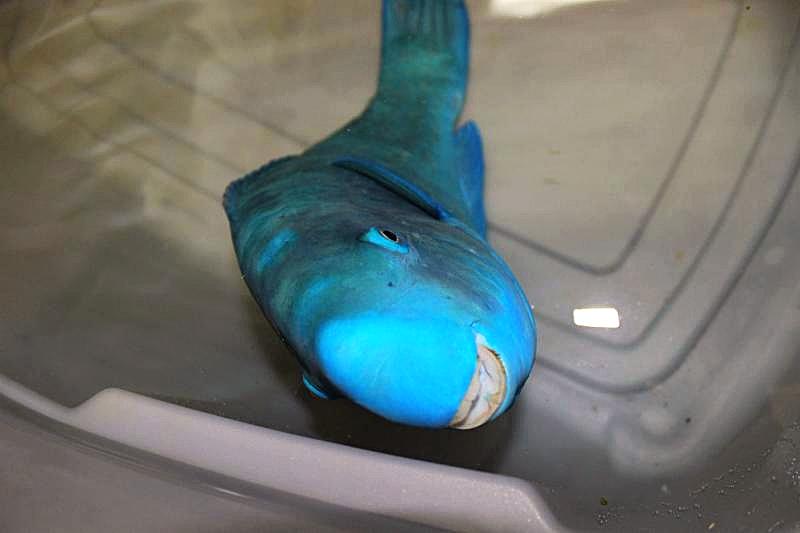
Blue parrotfish going under anesthetic

Blue parrotfish being removed from anesthetic
Before each fish was examined, they were first anesthetized in a solution rendering them unconscious and insensible to any pain. The length of time it took for each fish to go to sleep, was also the approximate amount of time it would remain sedated, giving Mr. Talbot an idea of how much time he had to take samples from the fish.
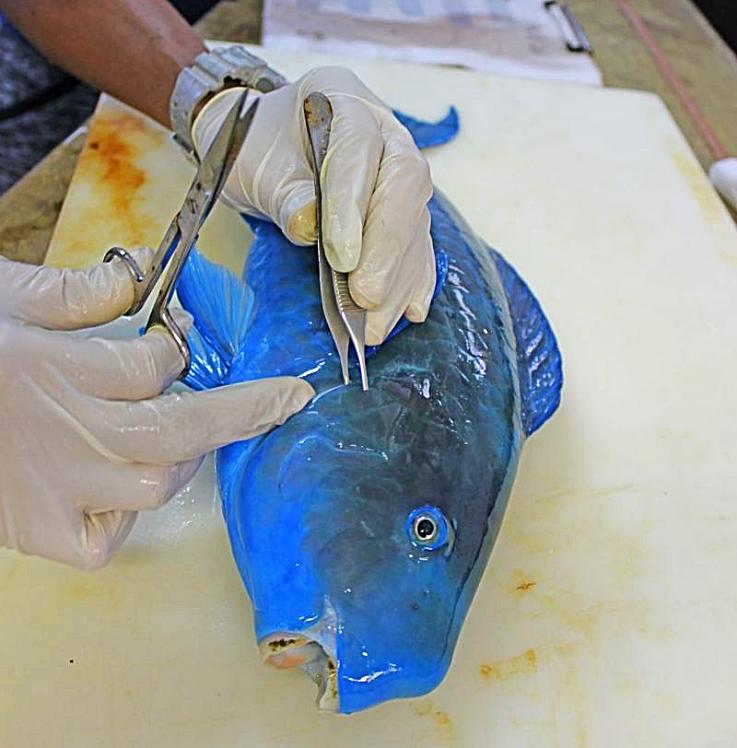
Blue parrotfish having its gills clipped
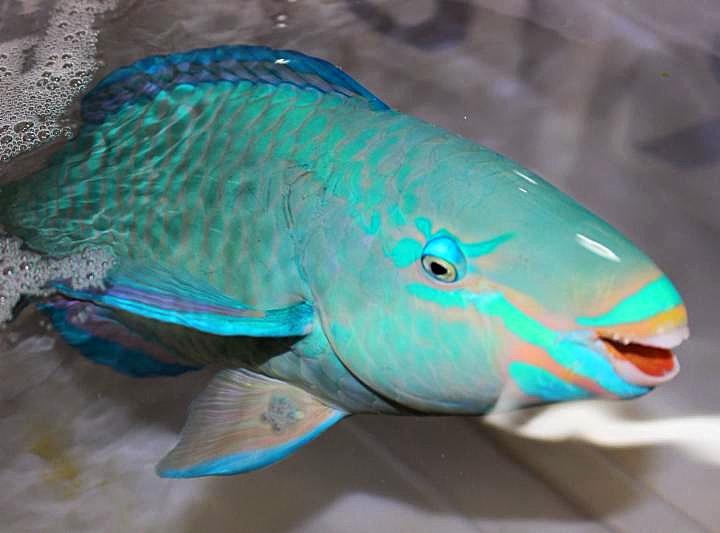
Queen parrotfish going under anesthetic
Each fish went through the same procedure; after sedation, they were removed from the water and placed on a cushion wrapped in plastic. Mr. Talbot quickly took a scale scrape, and a gill clipping - basically taking a sample of the skin mucous covering the scales and a tiny gill biopsy. The fish was then placed in a tub of fresh water, and Mr. Sanchez bubbled oxygen in the water surrounding the gills. The fresh water acted as final medication of sorts, as it would kill most external parasites (should there be any) and the bubbled gas helped ensure the fish had oxygen during its recovery from the anesthetic. After a few minutes, the animal was responsive and returned to a separate tank to await results of the procedure.
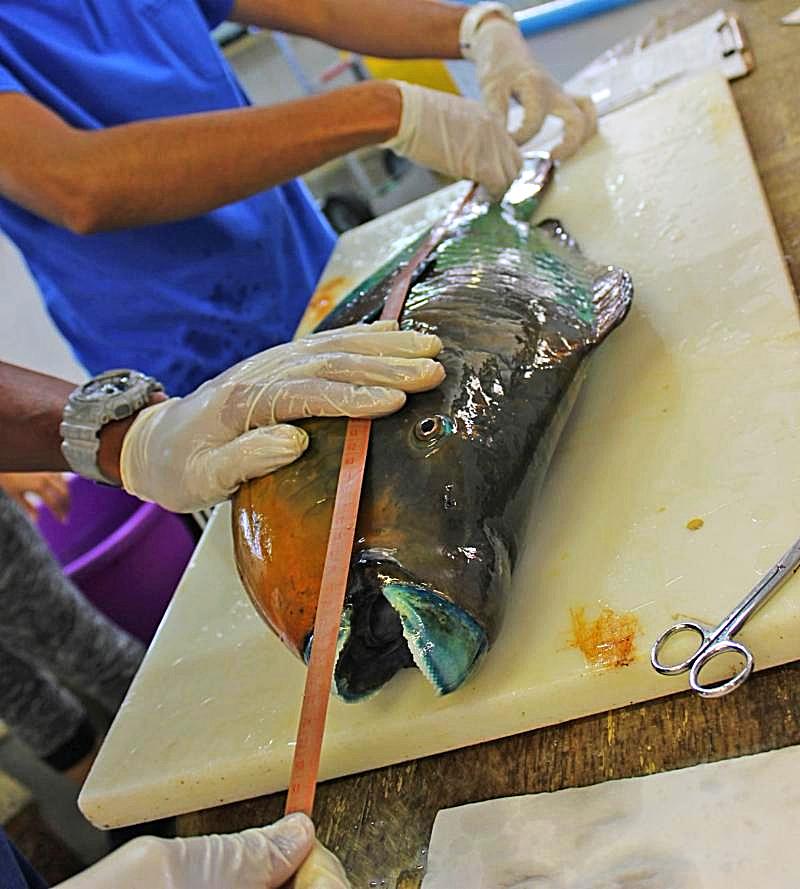
Rainbow parrotfish being measured
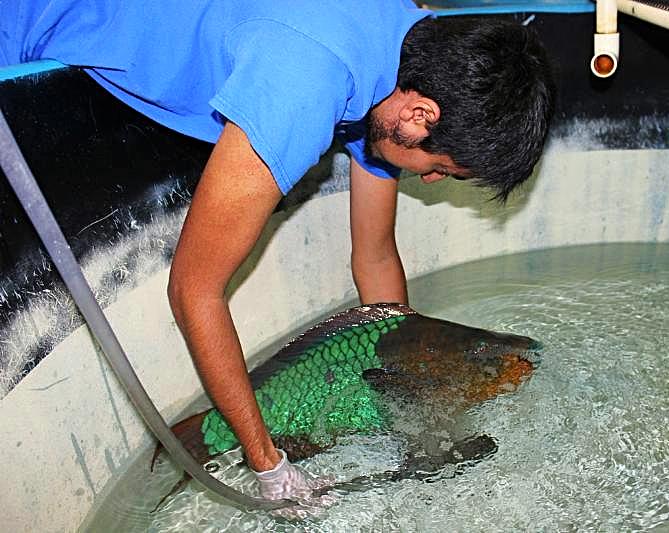
Mr. Sanchez running oxygen over the Rainbow parrotfish gills to aid in its recovery from the anesthetic
Once all the fish were sampled, Mr. Talbot took the scale scrapings and the gill clippings into the laboratory to be examined under a microscope for parasites infections, such as protozoa. If a parasite was found on either sample, the fish would have to go through another two weeks of quarantine and further treatment.
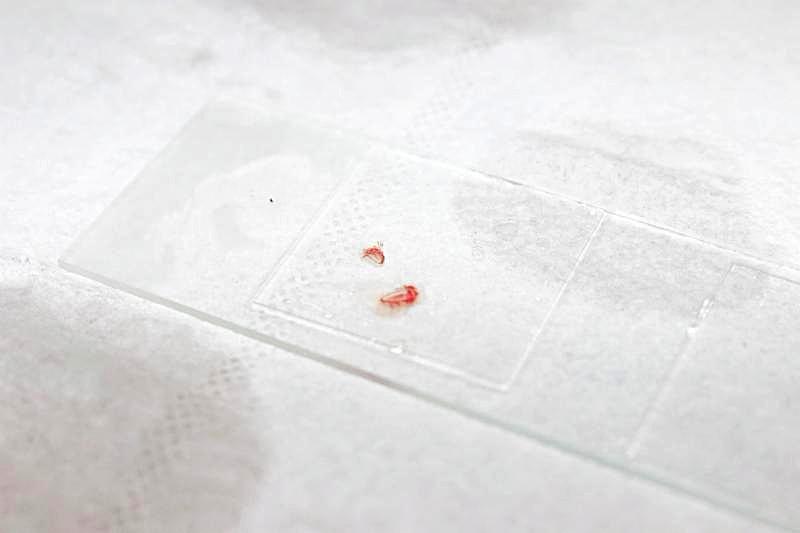
Gill clippings on a slide ready to be examined under a microscope
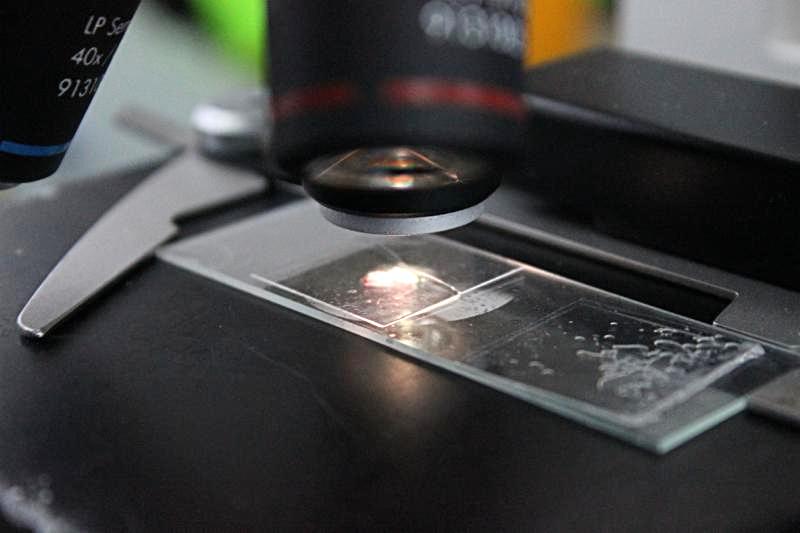
Gill clippings being examined

400x magnification of gill clippings
Thankfully, upon completion of the examination, all three fish were parasite free and received a clean bill of health. The queen and blue parrotfish were placed in the parrotfish habitat in the Aquarium Hall, and the rainbow parrotfish was placed in the North Rock habitat.
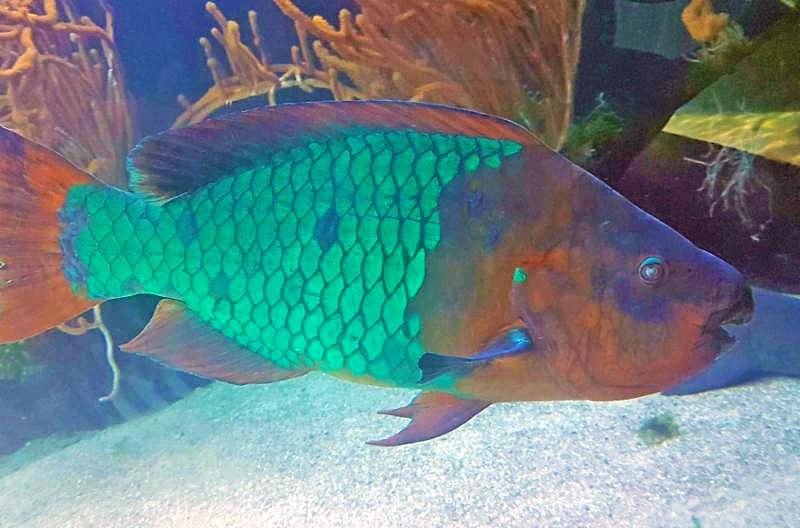
Rainbow parrotfish in the North Rock habitat
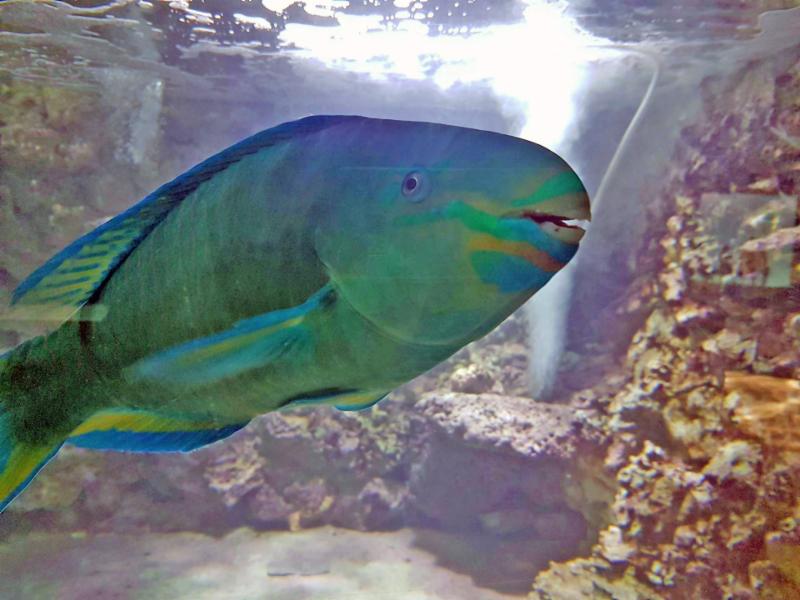
Queen parrotfish in the parrotfish habitat


